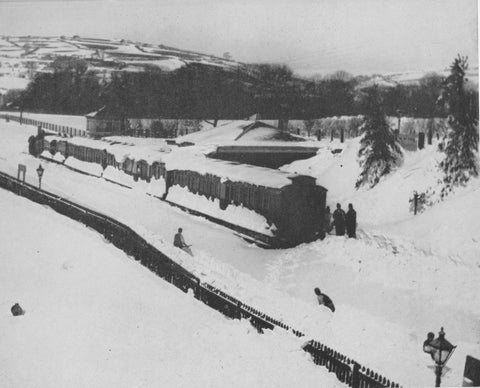The Great Blizzard of March 1891

2 minute read
The Great Blizzard of March 1891. A guest blog post by Ian Currie
It may be windy at the moment and unsettled but one of the greatest storms of all time occurred in March 1891 and it brought a combination of a severe gale, freezing temperatures and heavy snow that paralysed communities and it occurred in normally the mildest areas of The British Isles.
During March there is often quite a difference temperature wise between the colder north of Britain and the milder southern England as last Weekend has shown. The temperature reached 15C at places in Sussex whilst snow fell in quite a few areas north of the Midlands especially above about 200 metres. But this is not always the case.
One of the fiercest blizzards of all time raged across the South in 1891 and was particularly severe in Devon and Cornwall. A number of trains were lost in immense snow drifts including the Zulu Express which was stuck for 6 days having left Paddington bound for Devon. It became partially buried in a railway cutting near Oakhampton. The blizzard raged for several days starting on the 9th as a deep area of low-pressure moved east along English Channel.

The Great Blizzard was accompanied by storm force winds causing many ship wrecks, with 57 in the Southwest alone. Apart from the Zulu express near Oakhampton nine other trains were stranded. In the Southwest half a million trees were felled by the wind. The gale whipped up the snow leading to mountainous drifts and white out conditions. A ravine on Dartmoor was reported to have filled with snow 60 metres deep. A man froze to death near Dorking in Surrey and 7000 men were employed to clear the streets of Kensington in London.
Metcheck would like to thank Ian Currie for contributing this article to our blog and recommend taking a look at www.frostedearth.com, a fantastic resource for all weather enthusiasts.Also in Metcheck News

Dry Days? Try These Rain Gauge Hacks This Spring
Rain in short supply? Don’t let your rain gauge sit idle! Here are some unexpectedly fun ways to put it to use during a dry spell.

Closing the Early Warning Gap with Metcheck
Extreme weather events are becoming more frequent and severe, making early warnings crucial. Unfortunately, access isn't universal.

Sunshine or Shadows? The Groundhog Decides
Will it be 6 more weeks of winter or will there be an early spring? Read on to find out more about this North American tradition.
